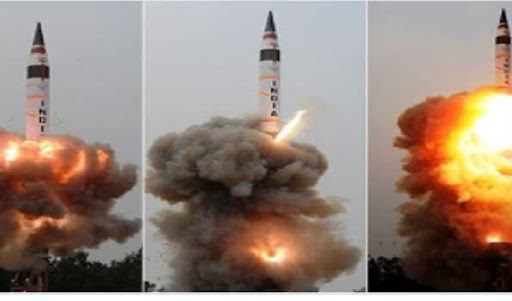In what could be called an arms race on the subcontinent, India conducted its eighth test as the first “user-launch” of its indigenous strategic Intercontinental Ballistic Missile (ICBM) after service introduction of the weapon system. This was also the first night test of the AGNI-5 missile believed to have a range of 5,000 km.
The three-stage solid fuel, 50-ton surface-to-surface ballistic AGNI-5 with a 1.5-tonne warhead and travelling at 24 times the speed of sound, was launched from the APJ Abdul Kalam Island, off the Odisha coast. The successful test of the missile’s trajectory and flight parameters were constantly monitored by radars, electro-optical tracking systems, telemetry stations and ships before it splashed down in the Bay of Bengal.
AGNI-5 is said to be capable of striking targets at distances up to 5,000 kilometres with a very high degree of accuracy and is part of India’s tri-services Strategic Forces Command inventory. The AGNI series of missiles form the bedrock of India’s nuclear deterrence programme. The test is significant as it comes during the ongoing 19-month long border stand-off with China in the eastern Ladakh region.
Meanwhile, China has gone ahead and conducted the second test of its long-range hypersonic missile, with a speed of mach eight. China’s first test in August this year was termed a failure as the missile could not hit the target. It can stay in orbit for an extended period of time. Viewed as a cause of concern by Washington, the Chinese weapon has been called a ‘destabilising weapon’ by the American Space Force Command, which has called the test ‘Sputnik moment’-a wakeup call for the US administration.












